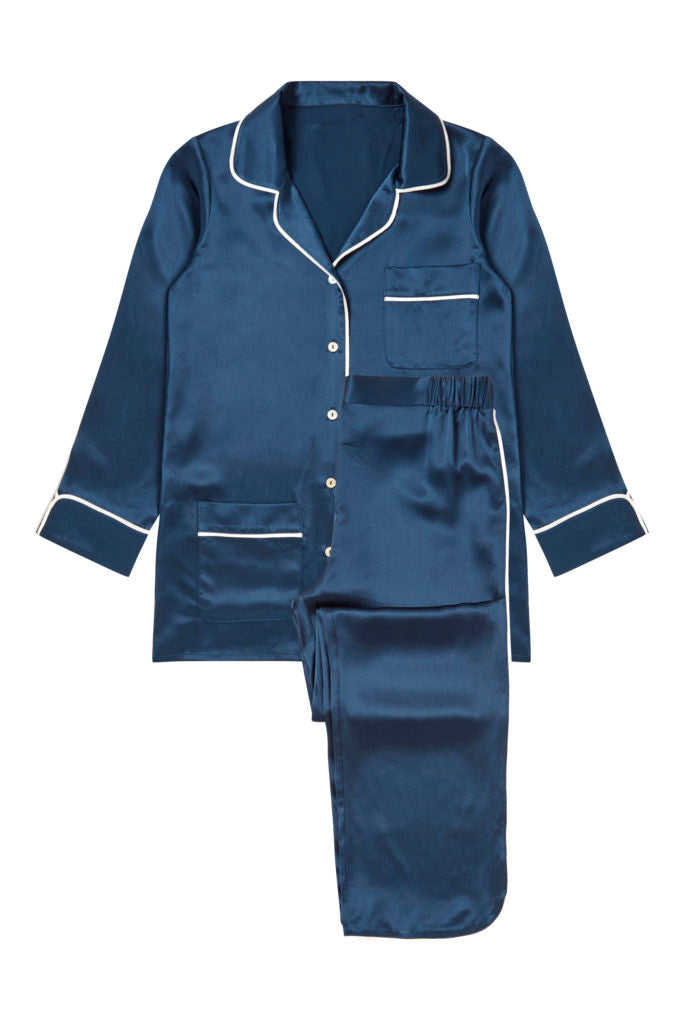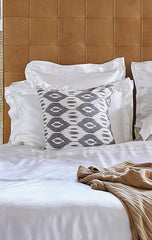What you should wear to bed for the best night's sleep
The average person will spend around 26 years in their life asleep, yet sleeping can still very much be an unspoken topic and an area that the majority of us really don’t know a great deal about.
But given the importance of sleep it is useful to understand what can affect the quality of your sleep to improve your everyday life and overall health.
According to the NHS, one in every three adults aren’t getting enough sleep, and this is due to a number of factors including blue light from tech, stress and diet.
Although how you sleep is dependent on many things, we’re here to explore what you should and shouldn’t wear to bed, why different seasons call for different nightwear, and how what you wear to bed can directly affect the quality of your sleep.
Naturally, we’re also going to explore the different fabrics that can be worn to bed to determine which material will aid your sleep best. From silk to cotton, robes and pyjamas to nightgowns and much more, we discover which materials are best to help support your well-need shut eye.
What material is best for sleeping?
Focusing on what material to sleep in is an important element to consider to ensure you get a good night’s sleep.
Each material used for pyjamas has a set of pros and cons but ultimately it’s about choosing the fabric that feels most comfortable for you against your skin while you sleep. This can depend on your skin type, whether you have any skin conditions, how your temperature tends to fluctuate throughout the night and even your age.
So, let’s take a look at the different fabrics typically on offer to us for nightwear:
Cotton: Cotton fabric is naturally lightweight, breathable and soft to touch, meaning it doesn’t tend to irritate the skin. However, cotton does a poor job of insulating which may make you feel cold during the winter months without a thick blanket. Its breathable qualities can be great to keep you cool in warmer months, however, cotton can often be inefficient at wicking away moisture, so if you are prone to night sweats, this likely won’t be the most comfortable material for you.
Linen: Linen is a lightweight yet durable choice for pyjamas which is why it’s known for being a staple material for summer. Linen allows for optimum breathability and it has been said that you perspire up to 1.5 times less than when wearing cotton. However, over on the cons side is that linen has a tendency to crease and crinkle, and it can also stain very easily.
Silk: Gentle to the skin, dry skin and hair won’t be snagged or irritated by this sleek, smooth material. Silk is also a thermoregulating fabric, meaning it can keep you cool when you’re hot and warm when you’re cold. Whether you choose to wear silk pyjamas, a silk nightdress or a silk dressing gown, paired with silk or cotton bed sheets, this material provides great health benefits and the ideal sleeping environment. Many people often find that silk is the fabric that is ‘just right’ for them.

Are silk pyjamas comfortable?
Silk is a very versatile fabric and can be perfect for a range of nightwear due to its temperature regulating qualities that make it ideal for year-round use. The natural protein fibres of the material makes it ‘silky’ smooth to the touch. These natural properties hardly make it surprising that silk pyjamas are a popular choice to wear to bed.
If you are the type of sleeper that tends to move around a lot, you may feel a little ‘slippery’ in silk pyjamas at first, but you soon get used to the texture and by no means will this make you uncomfortable. However, it’s important to note everyone’s notion of comfort varies and whichever material you choose for your pyjamas should be the one that you think is the most comfortable.
Wearing a silk eye mask could also contribute to a great night's sleep. The natural cooling effect of silk against the eyes ensures your face doesn’t become too warm in your sleep while blocking out light. This can be essential for some people, particularly lighter sleepers, as the body is naturally roused from sleep when light begins to seep in.
What is the coolest fabric to sleep in?
Temperature is an important factor to consider to ensure you have the best night's sleep. Being too hot or too cold can not only affect the quality of your sleep, but can also prevent you from sleeping at all. To control this you can choose the right pyjamas with the best fabric to maintain the desired night time temperature of 16-18°C.
Cotton is lightweight and great to keep you cool when you’re warm but it’s not a great insulator so would only be best to use during the warmer months, meaning you may have to invest in more pyjamas in a different fabric for other seasons.
As mentioned above, silk works in tandem with your body, regulating with your own temperature. So whether you want to cool down or warm up, silk is the fabric that will adapt with your needs so you can rest peacefully.

So, what is the best fabric for pyjamas?
The important things to remember are:
If you wish to remain comfortable and have the option of a set of pyjamas that are great for all seasons, choose silk.
If you need a set of pyjamas that will keep you cooler during the slightly warmer months, choose cotton.
If you require pyjamas to wear in hotter climates, opt for linen as this is the most breathable fabric.
To ensure you have a good night’s sleep, temperature and comfort are two of the most important factors to control, which can be attained with the right fabric in bed.
By sleeping in silk pyjamas, dressing your bed in silk sheets and even investing in a silk eye mask for complete darkness, you can create the ultimate environment to keep your temperature where it should be, while also providing a gentle touch to the skin with ultimate ‘silky’ smooth comfort.
Ready to make the switch to silk pyjamas? Shop the full Gingerlily nightwear range today.

